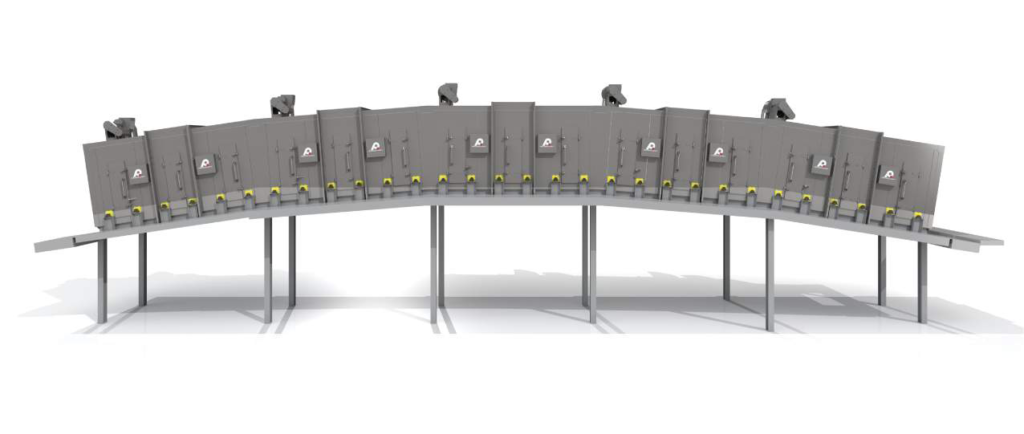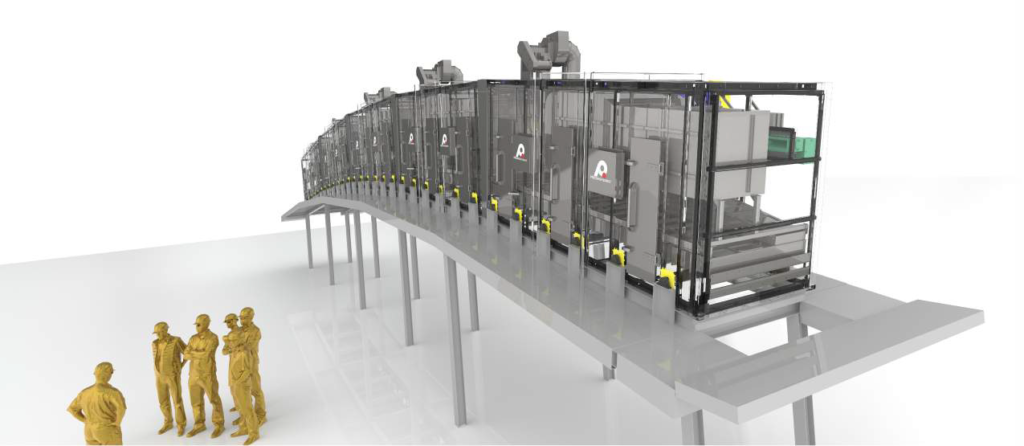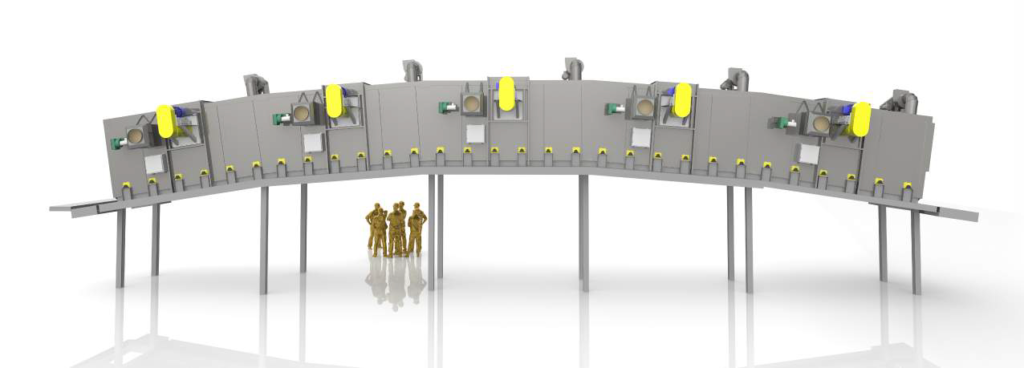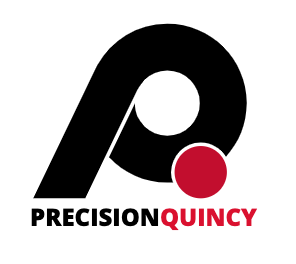OLIVER HEALTHCARE PACKAGING CUT CAPITAL COSTS 60% WITH A RETROFIT OF THEIR INDUSTRIAL OVEN WITH PRECISION QUINCY

"Precision Quincy has been a true partner for our business. Their engineering expertise and project management process ensured the project was accomplished within our time and budget constraints, at a fraction of the cost of buying new."

Global Process Engineer
Oliver Healthcare Packaging
Oliver Healthcare Packaging has been developing sterile, cost-effective, protective healthcare and medical device packaging for over 40 years.
CHALLENGES
- Identifying that a vital part of their production process a web drying oven was showing early signs of corrosion.
- Needing to replace the equipment to ensure Oliver’s high quality standards were maintained.
- Feeling uneasy about the high cost, long lead times, and additional floorspace connected with buying a new oven.
Solution
Precision Quincy provided an alternative to buying new equipment -a custom retrofit solution that included:
- Full examination of the existing oven’s design and components to evaluate which components needed replacement.
- Precise specifications of the oven captured using 3D scanners.
- All the required repairs, modifications and improvements 3D modelled and shared with the customer to ensure the oven would work before installation.
- New parts fabricated with precision at Precision Quincy’s facility. CFD used to validate Precision Quincy’s design and verify that air flow would property transfer heat to the product.
- Technicians worked solely on site, with the oven still fixed in place, minimizing business disruption, downtime, and the need or additional floor space.
- Five-star communication and project management at every step.
Results
- 60% less expensive than buying new.
- 20% increase in oven throughput.
- Project delivered ahead of time.
- Oven downtime reduced by a month.
Challenges
Facing the high costs and unwanted downtime of replacing a deteriorating drying oven
As a global leader in medical packaging solutions, Oliver Healthcare Packaging is meticulous about every piece of its production process.
Among the company’s most prominent products is its water-based adhesive-coated packaging.
The coating process uses high-performance web drying ovens to cure the adhesive and ensure it’s well anchored to the packaging. As a result, Oliver’s industrial ovens play a critical role in production.
“Our drying ovens, and the drying parameters they adhere to, are key to our production process and critical in providing customers with a safe and effective product,” says Phil Kaufman, Oliver’s Global Process Engineer.
So when one of their drying ovens showed early signs of corrosion, the company was quick to act. With no such thing as a ‘minor particulate issue’ in the medical industry, they wasted no time searching for a new oven to replace the old unit.
After scouting the market for a replacement, Phil quickly realized it would become a large capital project.
Significant investment would be required. Plus, Oliver would need to mitigate against long lead times for new equipment and develop contingencies to ensure production wasn’t impacted while the oven was out of action.
In addition, buying a new industrial oven would require that Oliver receive certifications and approvals from its customers–a process that takes up significant time and expense.
“Internally, we had discussions around decommissioning the whole line and putting in a new one, as well as just replacing the oven portion itself,” explains Phil. “Whichever direction we went, the project was going to be very expensive and require close management to ensure downtime was minimized.”
Just when Phil thought buying new equipment was the only option, the site’s Plant Manager unearthed an exciting alternative for returning the industrial oven to peak performance: Retrofit, a unique offering by Precision Quincy.
“Until that point, retrofitting web drying ovens wasn’t something we’d ever seen in the marketplace,” says Phil. “The more we looked into it, the more appealing it was.”
“First, it would potentially cost less than half the price of a new oven. And secondly, if we retrofit the existing oven we could use all the established parameters and settings. Whereas a new oven would involve going back and re-engineering our products and drying profiles.”
As a relative newcomer to the idea of a retrofit, Phil still had some reservations. However, it sounded like such an ideal solution that he just had to contact Precision Quincy to find out more.
Solution
Tailored retrofit project that’s less expensive, with faster lead times and requires less floor space than buying new equipment
When Phil was introduced to the Retrofit team at Precision Quincy, his hesitations quickly diminished.
The more questions he asked, the more impressed he was with the company’s approach to their Retrofit offering. Unlike other businesses that retrofit only their own brands, Precision Quincy provides tailored retrofit projects for every brand. The standards in NFPA 86 provide a roadmap for the concepting and design of any retrofit project.
Not only that, they approached this retrofit project with the mindset of maximizing Phil’s ROI by incorporating technology and industrial oven design elements that improved run times and production speeds, streamlined maintenance, and maximized availability and uptime. Oliver would also be able to conserve floor space pecause the retrofitted oven was built on the existing oven’s footprint.
“It was clear they considered the outcome of every retrofit project to be like a ‘new product,” says Phil.
So when one of their drying ovens showed early signs of corrosion, the company was quick to act. With no such thing as a ‘minor particulate issue’ in the medical industry, they wasted no time searching for a new oven to replace the old unit.
After scouting the market for a replacement, Phil quickly realized it would become a large capital project.
Significant investment would be required. Plus, Oliver would need to mitigate against long lead times for new equipment and develop contingencies to ensure production wasn’t impacted while the oven was out of action.
In addition, buying a new industrial oven would require that Oliver receive certifications and approvals from its customers–a process that takes up significant time and expense.
“Internally, we had discussions around decommissioning the whole line and putting in a new one, as well as just replacing the oven portion itself,” explains Phil. “Whichever direction we went, the project was going to be very expensive and require close management to ensure downtime was minimized.”

When Phil learned that Precision Quincy had already successfully retrofitted a similar web dryer oven for a customer the previous year -and had a fantastic referral it was the final push he needed to buy.
Working with Precision Quincy felt like a partnership from day one. First, its project team worked with Oliver to understand the specific requirements for the project.
Top of the priority list was to rebuild the existing oven using stainless steel, which was used to prevent future corrosion. Well-organized project management and adhering to project deadlines were also critical for Phil.
“We’ve worked with companies where the project management is lacking and projects don’t finish on time-and it causes real problems for the business,” says Phil. “So we needed a partner we could trust to complete the project on time, to ensure business continuity.”
Precision Quincy was attentive to all Phil’s requirements. They provided a clear timeline that put Phil’s concerns at ease. They also set up weekly calls to keep the communication loop open, which was welcomed by Phil and his team.
“The meetings were a great way to share information and make sure we were pushing through the timeline the way we needed to, in order to have in a successful project,” he says.

On the engineering side of the project, Precision Quincy spent a full day onsite to capture every possible detail and precise specifications of the oven, using 3D scanners. They closely inspected the unit and established which components, controls and parts needed replacement.
Using this collected data, the team recommended design changes and modelled all the required repairs, modifications and improvements. And because every component was so precisely modelled and had direct correlation with the real world, every component had a perfect fit.
Precision Quincy’s innovative engineering approach included using computational fluid dynamics (CFD) software and the use of infrared cameras, all of which enabled them to perform virtual testing and verify that the changes they were making to the oven would succeed, before they executed on the installation phase.
Because the project was so critical to Oliver’s production flow, Phil set aside a huge chunk of his calendar to manage the project internally. Thanks to Precision Quincy’s organized approach, time management and collaboration, the project was far less onerous on Phil’s time than he’d expected.
“Compared to replacing the oven with a new model, the retrofit installation was surprisingly easy,” says Phil. “We didn’t have to worry about making building modifications or other ancillary costs. Instead, Precision Quincy’s technicians worked on site, with the equipment still fixed in place, minimizing the use of floor space, disruption and downtime.”
While Phil was impressed with every step of the process, what stood out most was how accommodating and understanding Precision Quincy’s team was.

Results
Costs reduced by 60%, oven uptime maximized, and throughput improved by 20%
Precision Quincy’s custom engineered retrofit project cost Oliver 60% less than buying new equipment. Phil was hugely impressed with the value proposition.
Precision Quincy’s retrofit process delivered faster engineering, manufacturing, and installation compared to installing new equipment. As a result, the project was completed a month faster than buying new, reducing the associated downtime and ensuring a critical piece in their production jigsaw was back in action sooner.
While improving the performance of the oven wasn’t a project KPI, Precision Quincy achieved it regardless. In fact, the retrofitted oven increased throughput by 20%, meaning Oliver can now do more drying in less time, saving energy costs in the process.
“Precision Quincy used their expertise and gave us recommendations that have enabled us to get a better drying performance than we had out of the old oven,” says Phil. “And that’s just attributable to their expertise and knowledge about ovens and drying.*
Precision Quincy’s project team had such a handle on end-to-end delivery that Phil was able to take a step back, and channel his time into other value-added projects.
“I expected the project to take ot of time from me,” says Phil. “However, I was pleasantly surprised, because Precision Quincy’s project management and execution meant I could reduce my own time commitment.”
Choosing the retrofit route also eliminated the cost and time involved in getting new equipment approved and certified. So thanks to Precision Quincy, they avoided all those costly and time-consuming procedures.
Overall, Phil appreciates the effort Precision Quincy made to create a collaborative partnership, which helped him cut costs, improve processes, and reduce downtime.
“Working with Precision Quincy was a really positive experience and a very succepsful project for us,” he says. “In terms of fit and finish and the way that the oven fit together, it was flawless. Their project management and engineering were second to none.”
No surprise then that Phil recommends Precision Quincy and its Retrofit specialists to any manufacturing business looking to modernize their existing industrial ovens at less cost, and with shorter lead times.

